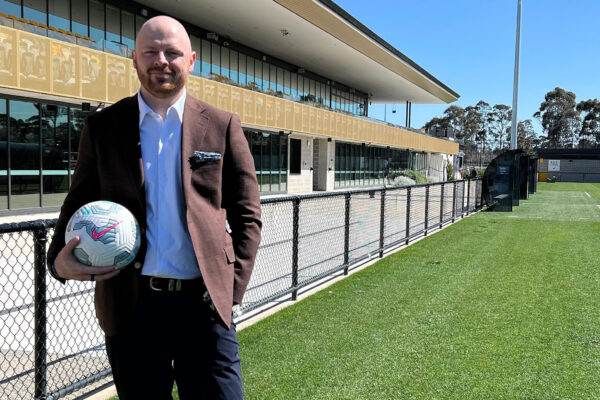
SwipeStation is leading the way when it comes to technology in the sports and entertainment business. Known as a contact-free mobile payment service, it is proven to be a game-changer in beating the queues for food and drink at large venues.
The service eliminates queues by increasing the flow of traffic through its ‘click and collect’ ordering system. Its user friendly menu which is accessed via scanning a QR code, gives customers full control of what they want to order and when they want it.
SwipeStation’s contact-free mobile payments enable bar staff to serve in 15 seconds with no training – and fans can use the service without any phone connectivity. You will need to download the SwipeStation app from either the Apple or Play store to get started, but once downloaded the app works without an internet connection. From either the Apple or Play stores, you can then order your food and beverages through the apps’ menu and pay for them once your ticket is printed via the physical SwipeStation screen (located near the food/bar area). Once scanned, the order is sent to the kitchen and the machine prints you an order receipt. Fans then get to skip the queue by accessing the dedicated fast lanes for SwipeStation customers.

The technology is convenient and powerful considering its size. It only takes 17 megabytes of data to download to your mobile device. Even more handy is the ability to use the same QR code if you’re wanting to order the same items again. Most fans have been to a big match with their friends and tried to remember several different drinks orders, only to get to the bar and forget. The QR code can be saved for future events at the stadium so you never have to worry about forgetting that drinks order again. All orders placed through the SwipeStation app are provided with email receipts to easily keep track of what you are purchasing.
The SwipeStation technology is not only helping with the fans’ experience, it’s helping shape businesses inside the stadiums. With their motto ‘ half the drinks in half the time’, SwipeStation is on a mission to increase sales and improve staff efficiency for stadium caterers. A recent study by computer software company Oracle concluded that if food and beverage queues at UK stadiums were cut in half, you could see a 45 percent increase in revenues. SwipeStation says it has solved the problem of transient staff slowing down the process of ordering inside events where there are large mass gatherings.
They have proven that they can reduce the service time down to 15 seconds by cutting out customers having to place their order in person. Customers only present to the food and beverage staff once the order has been placed and paid for, therefore only presenting to the counter to pick up their items. SwipeStation believes that their technology is set up in a way that even untrained or unmotivated staff can rely on the technology to help them through their shifts. SwipeStation’s presence in stadiums is a move that can fast track efforts towards stadiums operating completely cashless worldwide. Perhaps SwipeStation’s strongest argument for having their technology in all stadiums is the fact that their technology does not require an internet connection. Currently, the costs of having internet in stadiums is a price only the wealthy businesses can afford. SwipeStation eliminates that problem from a catering perspective.

The SwipeStation technology has several benefits to clubs and large venues looking to increase revenue sales, whilst also controlling the flow of fans inside stadiums. With the Covid-19 pandemic taking its toll on sporting leagues across the world, SwipeStation machines at stadiums can be an effective measure in preventing fans congregating in large queues. Fans using mobile technologies should not come as a surprise – during the pandemic, citizens were asked to use mobile technologies and apps more often to help minimise the spread of Covid-19. Coming out of the pandemic, many businesses in the hospitality sector offered menus and ordering from QR codes attached to tables, limiting the movement across venues. In a recent survey conducted by SwipeStation, patrons attending a UK stadium revealed that 84 percent have used their smartphones to order drinks from a pub in the past 12 months, of which 28 percent have for the very first time.
With the bottom line being increased revenue, lower staffing costs, and an improved fan experience, it’s just a matter of time before we see SwipeStation technology installed across UK stadiums and abroad.














